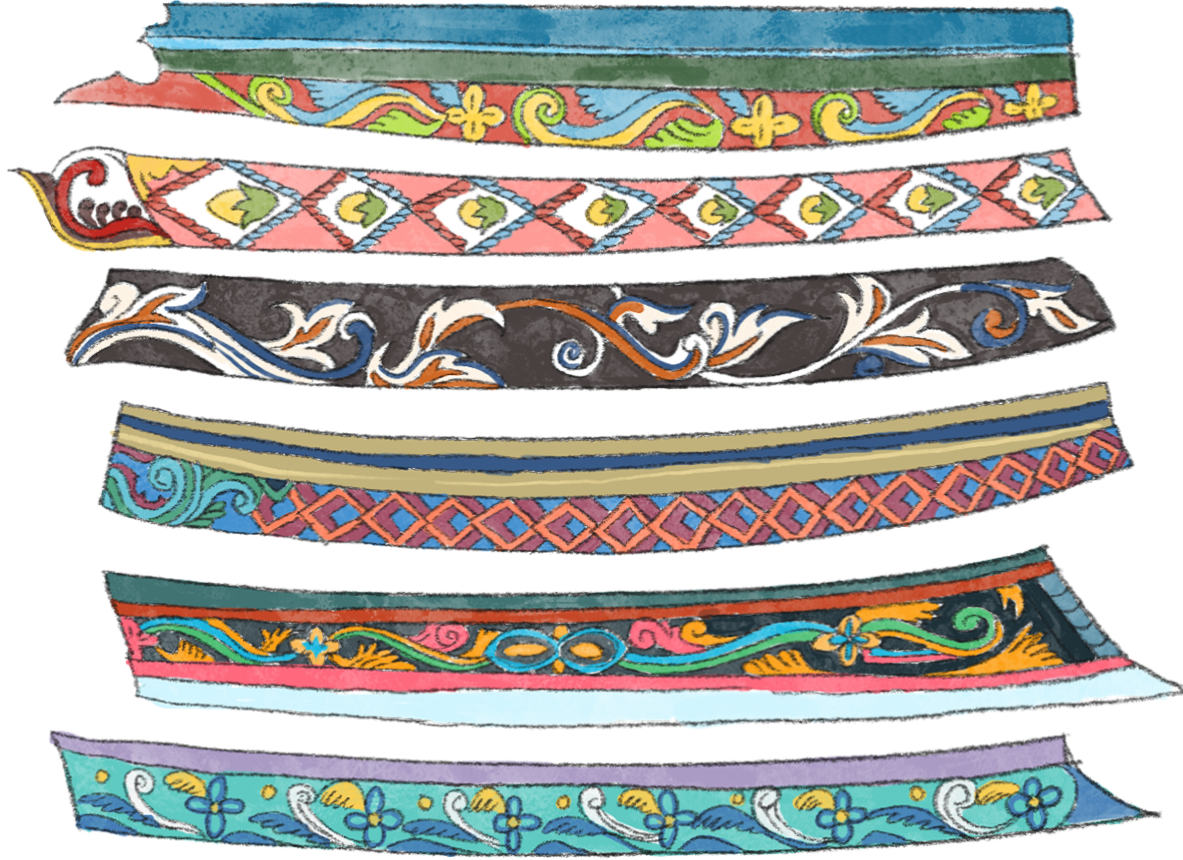Beauty of Perahu - Malaysia Traditional Boat
Discovering the Ancient Art of Boatbuilding

Loka and gang ventured up to the Northeastern parts of Peninsular Malaysia. It’s the home of picturesque beaches, quaint and quiet small town living, and most importantly, the traditional art of boatbuilding.
The Malay community on the East Coast (Pantai Timur) of Peninsular Malaysia heavily relies on boats for their daily activities. An abundance of wood resources led to the production of various types of boats. The geographical location of the towns on the East Coast drew many residents to venture into the fishing industry.



Did you know?
The Malay community is known to be among the best sailors in history! With a track record of travelling far and wide along the Malay Archipelago. Their ancestors were said to have travelled as far as the Polynesian Islands and then to Madagascar and later on, the West Coast of Africa. In fact, it is said that their descendents still inhabit these places to this day.
Back in those days, sailors and fishermen used boats made out of wood. They were meticulously handcrafted and then adorned with beautiful, hand painted visuals for protection at sea. Unfortunately, after the second World War, many sailors swapped their wooden boats for more modern, mechanical boats as they were cheaper and more convenient to use.
Today, the number of wooden boats out at sea have gone down significantly, as there aren’t as many boatbuilders left. This has also caused its prices to skyrocket, leading to the lack of orders or the need for it as there are cheaper alternatives available.

So, what’s so special about these boats?
Aside from its beautifully handcrafted finishes, the traditional Perahu (boat) was designed based on beliefs from the community in the past!
Here are 5 things we learned about the Perahu that we think you love to know too 😉


Each vessel has a Bangau and Okok
These are wooden pieces at the front of the boat that function to support the sail, balance the boat, and help draw fishing nets in. The Bangau is placed on the left side of the boat and the Okok, on the right.
While they may have practical functions, this didn’t stop the craftsmen from flexing their artistic skills when it came to designing and carving ornate motifs on them!
Wait, Bangau as in ‘Bangau’?
It’s a bird, it’s a plane - no, it’s really a bird! That’s right, the Bangau was shaped after the bangau (English Translation: Egret or Crane). And the Okok is actually designed to be the tail of the crane. ‘Why bangau tho’ you ask? Well, the Malay community believe that they give sailors good luck at sea! This is because of the bird’s love for fishies. It was also believed that a motif of the bangau had a spirit and that it would keep them safe on their voyages.

The heart of the perahu
While the Bangau and Okok’s ornate beauty caught viewers' eyes, there’s another part of the boat that’s even more important to the sailors and the fishermen. It’s called the Caping. The Caping is shaped as a betel leaf and has plant motifs carved into it. It’s also permanently attached to the keel of the ship and was often described to be like a Banyan Tree, which was sacred to the community.
Back then, it was believed that the Banyan Tree was home to guardian spirits, and having it in the form of the Caping served as protection and the safety guardian for the whole crew on board!
Blessings at Sea
In the past, people believed that every object (animate or inanimate) possessed a spirit. The fishing community believed that the friendly spirits of the sea and sky hovered above the Bangau. So, most boat owners would hold blessing ceremonies at least three times a year for the safety and protection of their crew. The ceremony would be conducted by a bomoh and the ritual would involve both the Bangau and Okok. They would be anointed with oil, covered with face powder and had a garland with fragrant flowers placed upon them.
Of Colours and Culture
Designs on 'Papan Tarik'
Out of all the wooden Perahus, the Kolek boat remains the most unique with vibrant colours and intricate designs all over. The lower part of this boat is usually painted in varying colours from red, yellow, green, blue and more, but is usually painted red.
It boasts beautiful paintings of flowers and the traditional Thai Kanok (flame-like) patterns that are usually painted by hand by the boatbuilder themselves. The patterns on the exterior usually start from the top edge of the boat’s side and it is usually painted in three stripes.
The only exception to how they could decorate their boats was that they weren’t allowed to paint visuals of humans or animals, as it was against their Islamic beliefs to do so.
Blessings at Sea
In the past, people believed that every object (animate or inanimate) possessed a spirit. The fishing community believed that the friendly spirits of the sea and sky hovered above the Bangau. So, most boat owners would hold blessing ceremonies at least three times a year for the safety and protection of their crew. The ceremony would be conducted by a bomoh and the ritual would involve both the Bangau and Okok. They would be anointed with oil, covered with face powder and had a garland with fragrant flowers placed upon them.

Designs on 'Papan Tarik'
Of Colours and Culture
Out of all the wooden Perahus, the Kolek boat remains the most unique with vibrant colours and intricate designs all over. The lower part of this boat is usually painted in varying colours from red, yellow, green, blue and more, but is usually painted red.
It boasts beautiful paintings of flowers and the traditional Thai Kanok (flame-like) patterns that are usually painted by hand by the boatbuilder themselves. The patterns on the exterior usually start from the top edge of the boat’s side and it is usually painted in three stripes.
The only exception to how they could decorate their boats was that they weren’t allowed to paint visuals of humans or animals, as it was against their Islamic beliefs to do so.
Blessings at Sea
In the past, people believed that every object (animate or inanimate) possessed a spirit. The fishing community believed that the friendly spirits of the sea and sky hovered above the Bangau. So, most boat owners would hold blessing ceremonies at least three times a year for the safety and protection of their crew. The ceremony would be conducted by a bomoh and the ritual would involve both the Bangau and Okok. They would be anointed with oil, covered with face powder and had a garland with fragrant flowers placed upon them.
Of Colours and Culture
Designs on 'Papan Tarik'
Out of all the wooden Perahus, the Kolek boat remains the most unique with vibrant colours and intricate designs all over. The lower part of this boat is usually painted in varying colours from red, yellow, green, blue and more, but is usually painted red.
It boasts beautiful paintings of flowers and the traditional Thai Kanok (flame-like) patterns that are usually painted by hand by the boatbuilder themselves. The patterns on the exterior usually start from the top edge of the boat’s side and it is usually painted in three stripes.
The only exception to how they could decorate their boats was that they weren’t allowed to paint visuals of humans or animals, as it was against their Islamic beliefs to do so.
Famed for its unique design and vibrant colours, the Kolek boat is used by Muslim communities living in the southern provinces of Thailand to as far south as Kelantan, Malaysia. The community has since produced various types of boats with varying forms and functions.









